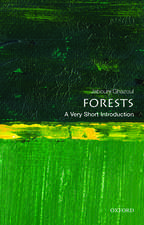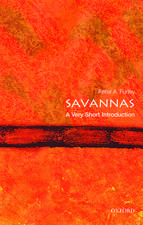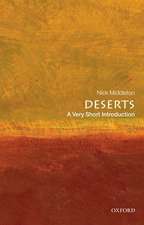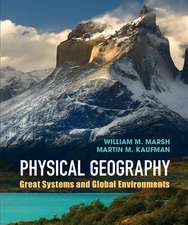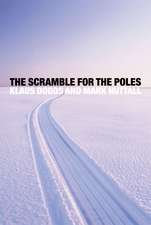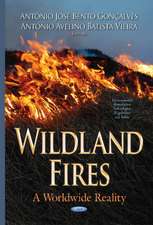Tractatus de Globis et Eorum Usu: A Treatise Descriptive of the Globes Constructed by Emery Molyneux and Published in 1592: Cambridge Library Collection - Hakluyt First Series
Autor Robert Hues Editat de Clements R. Markhamen Limba Engleză Paperback – 30 oct 2010
Din seria Cambridge Library Collection - Hakluyt First Series
- 23%
 Preț: 1114.88 lei
Preț: 1114.88 lei - 19%
 Preț: 724.68 lei
Preț: 724.68 lei -
 Preț: 274.30 lei
Preț: 274.30 lei - 19%
 Preț: 601.93 lei
Preț: 601.93 lei - 19%
 Preț: 547.37 lei
Preț: 547.37 lei - 23%
 Preț: 18039.27 lei
Preț: 18039.27 lei -
 Preț: 367.33 lei
Preț: 367.33 lei -
 Preț: 352.93 lei
Preț: 352.93 lei -
 Preț: 375.31 lei
Preț: 375.31 lei -
 Preț: 331.89 lei
Preț: 331.89 lei -
 Preț: 366.95 lei
Preț: 366.95 lei -
 Preț: 367.12 lei
Preț: 367.12 lei -
 Preț: 280.34 lei
Preț: 280.34 lei -
 Preț: 337.00 lei
Preț: 337.00 lei -
 Preț: 337.00 lei
Preț: 337.00 lei -
 Preț: 277.29 lei
Preț: 277.29 lei -
 Preț: 467.51 lei
Preț: 467.51 lei -
 Preț: 248.28 lei
Preț: 248.28 lei -
 Preț: 238.94 lei
Preț: 238.94 lei -
 Preț: 428.59 lei
Preț: 428.59 lei -
 Preț: 375.10 lei
Preț: 375.10 lei -
 Preț: 368.10 lei
Preț: 368.10 lei -
 Preț: 472.59 lei
Preț: 472.59 lei -
 Preț: 517.53 lei
Preț: 517.53 lei - 19%
 Preț: 453.73 lei
Preț: 453.73 lei -
 Preț: 328.80 lei
Preț: 328.80 lei -
 Preț: 279.95 lei
Preț: 279.95 lei -
 Preț: 519.07 lei
Preț: 519.07 lei -
 Preț: 367.54 lei
Preț: 367.54 lei -
 Preț: 337.55 lei
Preț: 337.55 lei -
 Preț: 420.27 lei
Preț: 420.27 lei -
 Preț: 355.43 lei
Preț: 355.43 lei -
 Preț: 366.95 lei
Preț: 366.95 lei -
 Preț: 328.64 lei
Preț: 328.64 lei - 19%
 Preț: 455.75 lei
Preț: 455.75 lei -
 Preț: 422.01 lei
Preț: 422.01 lei -
 Preț: 248.28 lei
Preț: 248.28 lei -
 Preț: 365.80 lei
Preț: 365.80 lei -
 Preț: 377.44 lei
Preț: 377.44 lei -
 Preț: 368.10 lei
Preț: 368.10 lei
Preț: 367.12 lei
Nou
Puncte Express: 551
Preț estimativ în valută:
70.26€ • 73.16$ • 59.38£
70.26€ • 73.16$ • 59.38£
Carte tipărită la comandă
Livrare economică 10-24 martie
Preluare comenzi: 021 569.72.76
Specificații
ISBN-13: 9781108013499
ISBN-10: 110801349X
Pagini: 344
Ilustrații: 1 b/w illus.
Dimensiuni: 140 x 216 x 20 mm
Greutate: 0.44 kg
Editura: Cambridge University Press
Colecția Cambridge University Press
Seria Cambridge Library Collection - Hakluyt First Series
Locul publicării:Cambridge, United Kingdom
ISBN-10: 110801349X
Pagini: 344
Ilustrații: 1 b/w illus.
Dimensiuni: 140 x 216 x 20 mm
Greutate: 0.44 kg
Editura: Cambridge University Press
Colecția Cambridge University Press
Seria Cambridge Library Collection - Hakluyt First Series
Locul publicării:Cambridge, United Kingdom
Cuprins
Introduction; Latin title; English title; Table of contents from edition of 1594; Dedicatory epistle to Sir Walter Raleigh; Preface; Part 1. Of Those Things Which are Common Both to the Coelestiall and Terrestriall Globe: 1. What a globe is, with the parts therof, and of the circles of the globe; 2. Of the circles which are described upon the superficies of the globe; 3. Of the three positions of sphaeres: right, parallel, and oblique; 4. Of the zones; 5. Of the amphiscii, heteroscii, and periscii; 6. Of the periaeci, antaeci, and antipodes; 7. Of climates and parallels; Part II: 1. Of such things as are proper to the coelestiall globe; and first of the planets; 2. Of the fixed stars and their constellations; 3. Of the constellations of the northerne hemisphere; 4. Of the northerne signes of the zodiaque; 5. Of the constellations of the southerne hemisphere and first of those in the zodiaque; 6. Of the constellations of the southern hemisphere, which are without the zodiaque; 7. Of the starres which are not expressed in the globe; Part III: 1. Of the geographical description of the terrestriall globe; and the parts of the world not yet knowne; 2. Of the circumference of the earth, or of a greater circle; and of the measure of a degree; Part IV. Of the Use of Globes: 1. How to finde the longitude; latitude, distance, and angle of position, or situation of any place expressed in the terrestriall globe; 2. How to finde the latitude of any place; 3. How to find the distance of two places, and angle of position, or situation; 4. To finde the altitude of the sunne, or other starre; 5. To finde the place and declination of the sunne for any day given; 6. How to finde the latitude of any place by observing the meridian altitude of the sunne or other starre; 7. How to find the right and oblique ascension of the sunne and starres for any latitude of place and time assigned; 8. How to finde out the horizontall difference betwixt the meridian and verticall circle of the sunne or any other starre (which they call the azimuth), for any time or place assigned; 9. How to finde the houre of the day, as also the amplitude, of rising and setting of the sunne and starres, for any time or latitude of place; 10. Of the threefold rising and setting of stars; 11. How to finde the beginning and end of twilight for any time, and latitude of place; 12. How to find the length of the artificiall day or night, or quantity of the sunne's parallel that remaines abaove the horizon, and that is hid beneath it, for any latitude of place and time assigned. As also to find the same of any other starres; 13. How to finde out the houre of the day or night, both equall and unequall, for any tie of latitude of place; 14. How to finde out the longitude, latitude, and declination of any fixed starre as it is expressed in the globe; 15. To finde the variation of the compasse for any latitude of place; 16. How to make a sunne diall by the globe for any latitude of place; Part V. Of the Rombes that are Described in the Terrestriall Globe, and their Use. Of the Use of Rumbes in the Terrestriall Globe: 1. The difference of longitude and latitude of two places being knowne, how to find out the rumbe and distance of the same; 2. The rumbe being known, and difference of longitude; how to find the difference of latitude and distance; 3. The difference of longitude and distance being given, how to find the rumbe and difference of latitude; 4. The difference of longitude and rumbe being given, how to find the difference of longitude and distance; 5. The difference of latitude and distance being given, the rumbe and difference of longitude may be found; 6. The rumbe and difference being given, the difference of longitude and latitude may also be found; Indexes. Sailing directions for the circumnavigation of England, and for a voyage to the Straits of Gibraltar.
Descriere
This volume of the publications of the Hakluyt Society (1889) contains directions for using Molyneux's globes in calculating navigational points.


